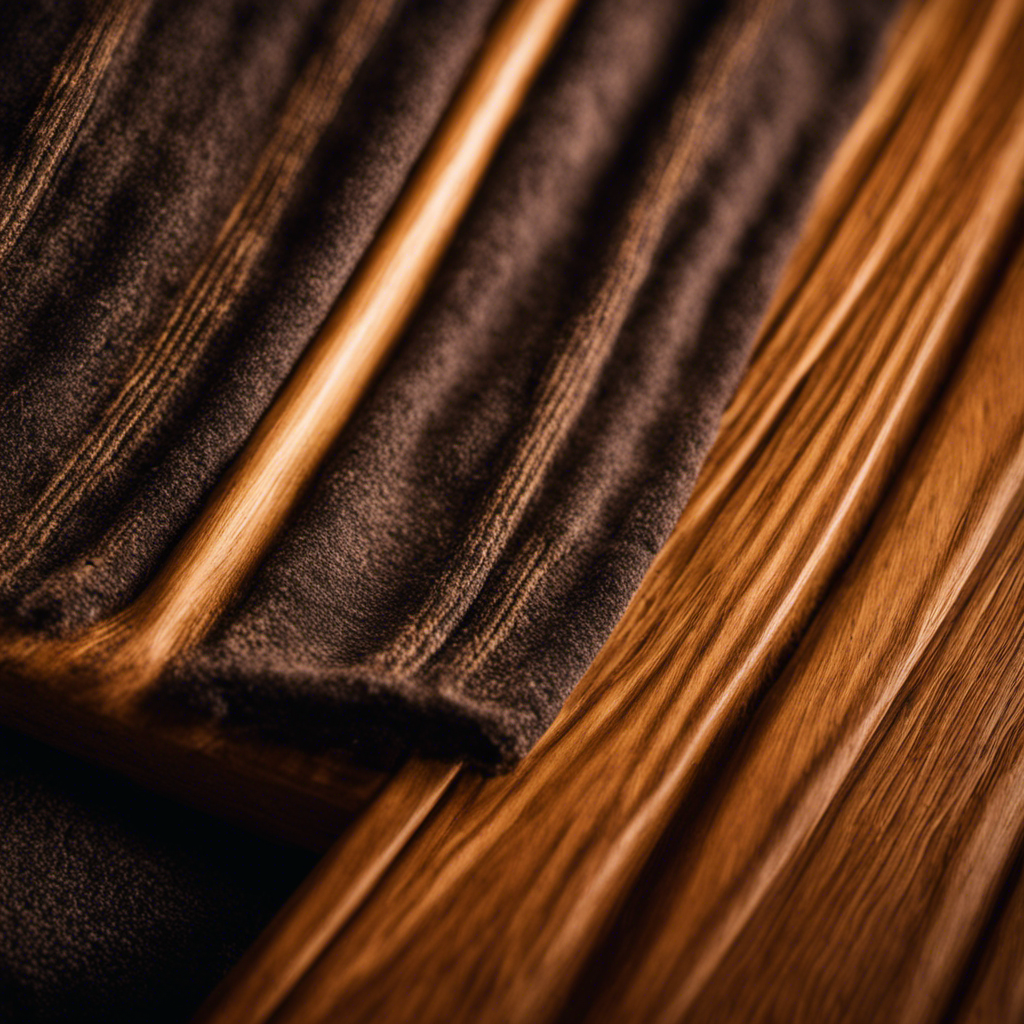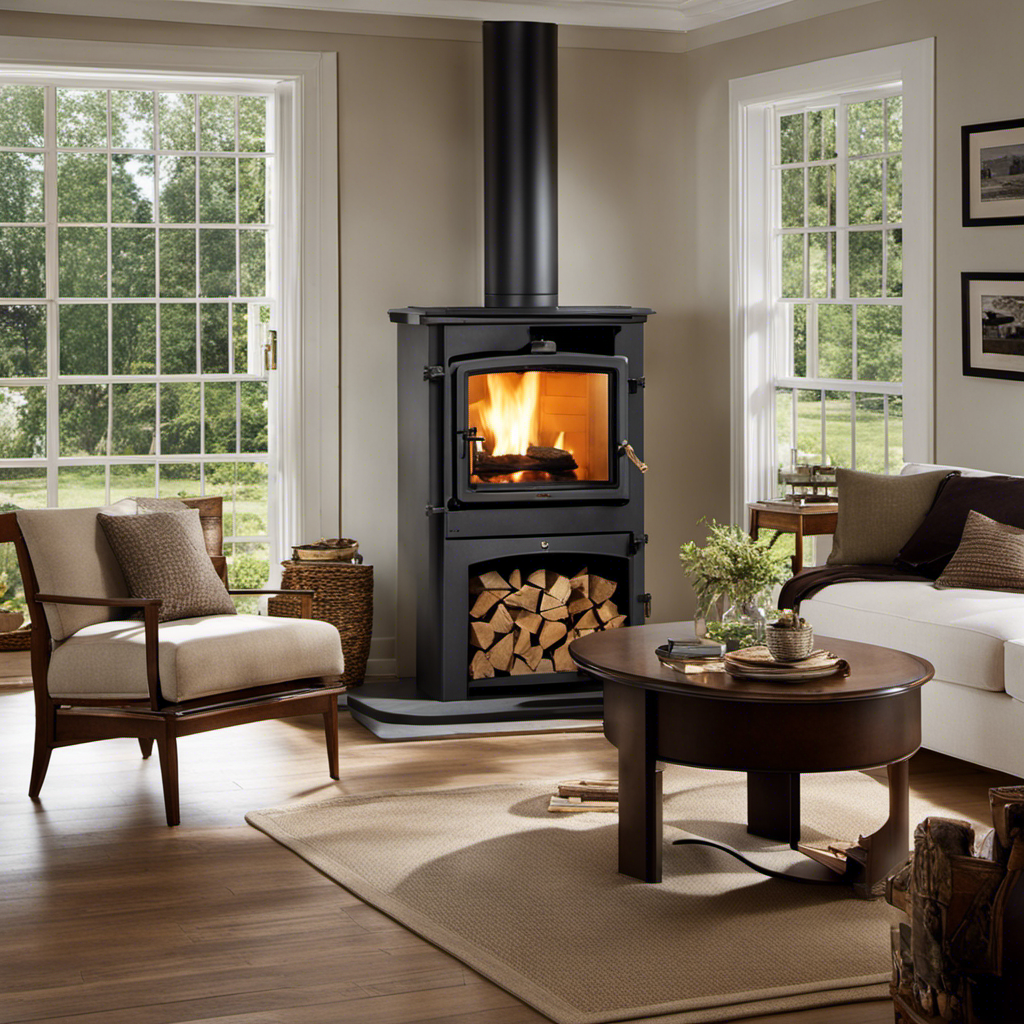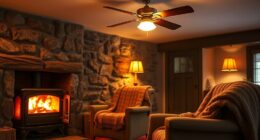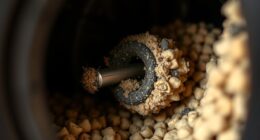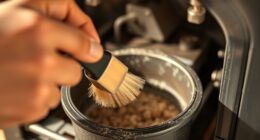As a property owner, cleaning my wood stove chimney is just as essential as making sure a machine is well lubricated.
In this step-by-step guide, I’ll show you how to efficiently and safely clean your wood stove chimney.
With the right tools and materials, you can ensure that your chimney remains free from dangerous buildup and operates at peak efficiency.
So, let’s get started on this journey to a cleaner and more efficient wood stove chimney.
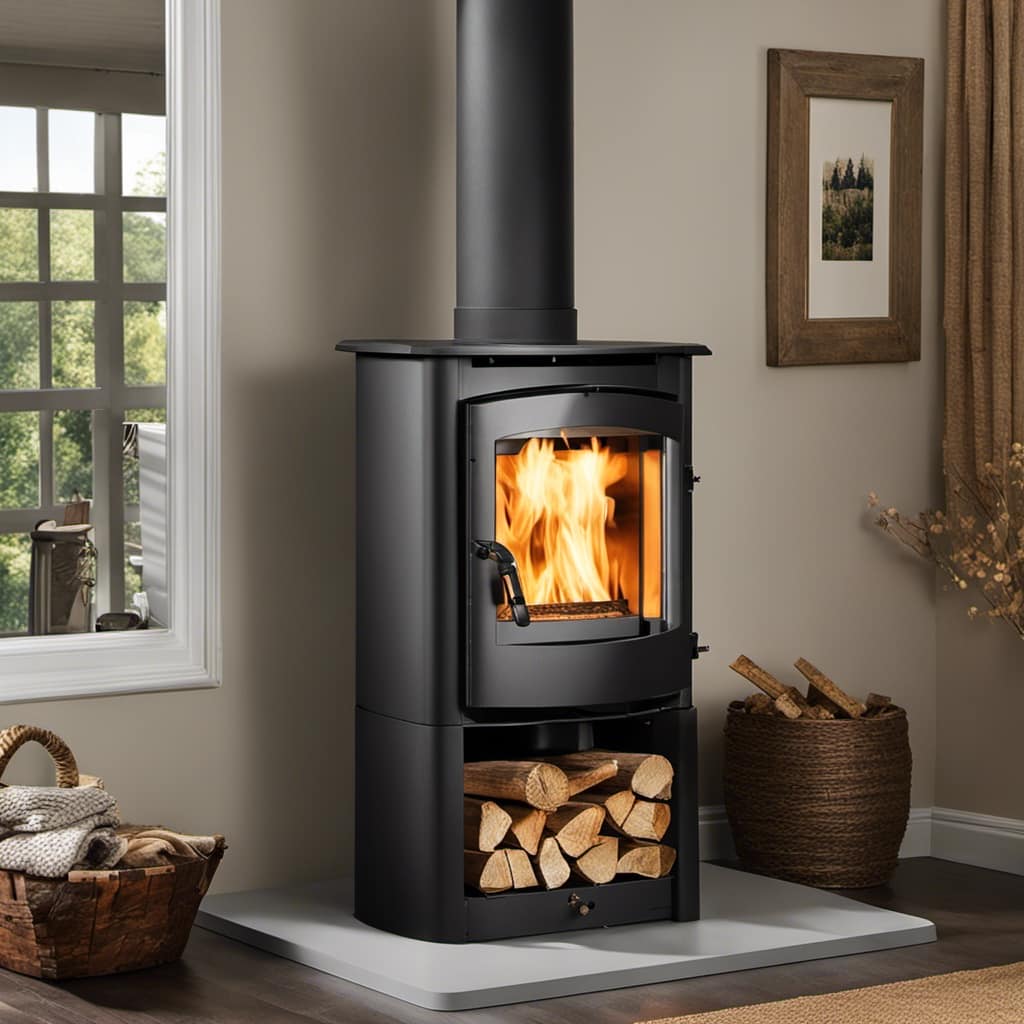
Key Takeaways
- Regular chimney cleaning is important to prevent chimney fires.
- Accumulation of creosote can lead to dangerous chimney fires.
- A dirty chimney can cause poor ventilation and restrict the flow of smoke and gases.
- Regular maintenance and inspections are essential for the safe and efficient operation of a wood stove chimney.
Understanding the Importance of Chimney Cleaning
I really need to understand why chimney cleaning is so important. Regular maintenance of your chimney is crucial for the overall safety and efficiency of your home. Over time, soot, creosote, and debris can accumulate in the chimney, causing a range of issues if left unaddressed. Here are some key reasons why chimney cleaning shouldn’t be overlooked.
Firstly, regular maintenance helps prevent chimney fires. Creosote, a highly flammable substance, builds up in the chimney lining as a byproduct of burning wood. If not cleaned regularly, the accumulation of creosote can ignite and lead to a dangerous chimney fire.
Secondly, a dirty chimney can cause poor ventilation. When debris clogs the chimney, it restricts the flow of smoke and dangerous gases, such as carbon monoxide, out of your home. This can result in a buildup of these harmful gases inside your living space, putting your health at risk.
Lastly, a dirty chimney can lead to structural damage. When debris accumulates, it can create blockages that prevent proper airflow. This can cause smoke and gases to back up into your home, leading to issues such as cracked flue tiles, damaged mortar joints, and even carbon monoxide poisoning.
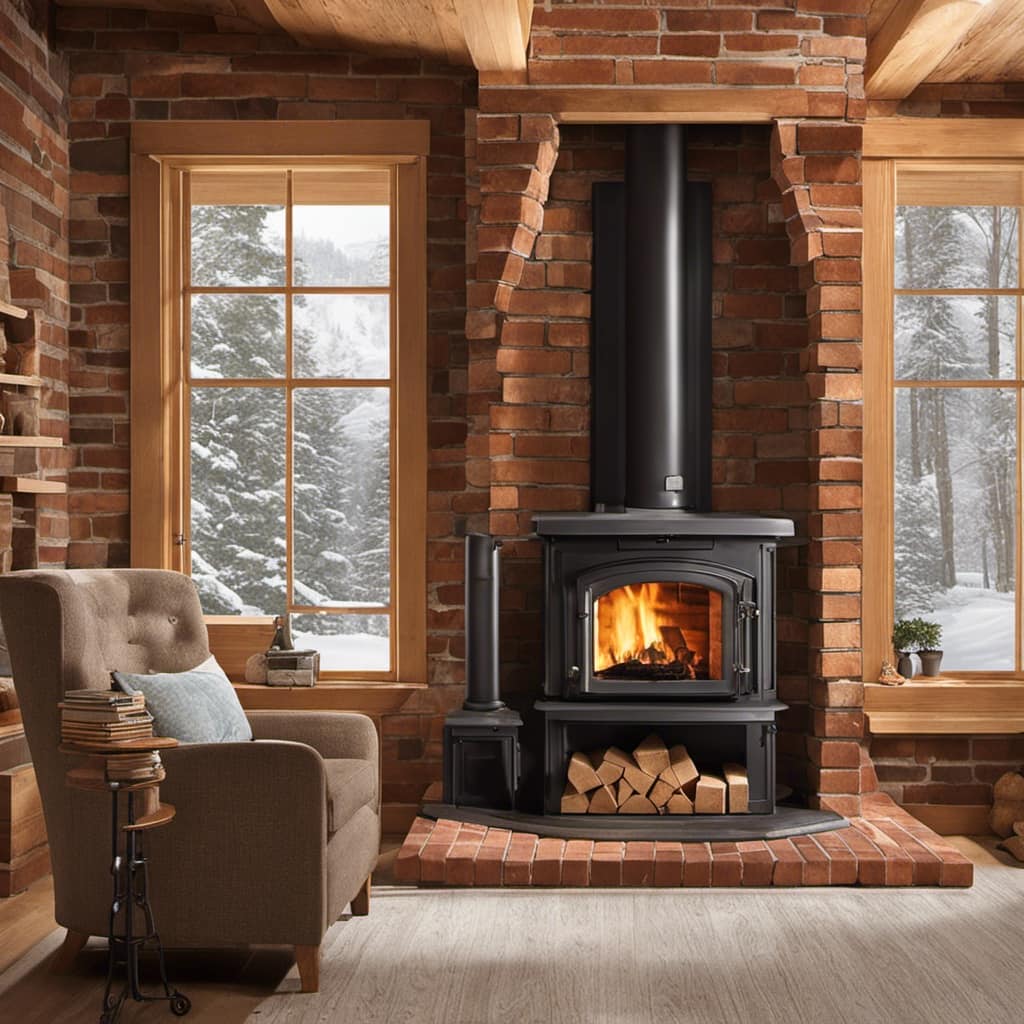
Gathering the Necessary Tools and Materials
To get started, I’ll need a ladder and some protective gear. Cleaning a wood stove chimney requires a few essential tools and materials to ensure safety and efficiency. Here’s a list of what you’ll need:
-
Ladder: Choose a sturdy ladder that can reach the top of your chimney safely.
-
Protective Gear: Wear safety goggles, gloves, and a dust mask to protect yourself from soot and debris.
-
Chimney Brush: Select a brush that matches the size and shape of your chimney flue. Different brush heads are available for different types of chimneys.

-
Drop Cloth: Lay a drop cloth or tarp around the area where you’ll be working to catch any falling debris.
-
Flashlight: A flashlight will help you see inside the chimney and ensure thorough cleaning.
Safety precautions are crucial during this process. Make sure to secure the ladder properly and have someone nearby to assist you if needed. Additionally, wear appropriate protective gear to prevent any injuries or health hazards.
Now that we’ve gathered the necessary tools and materials, let’s move on to preparing the wood stove and chimney for cleaning.
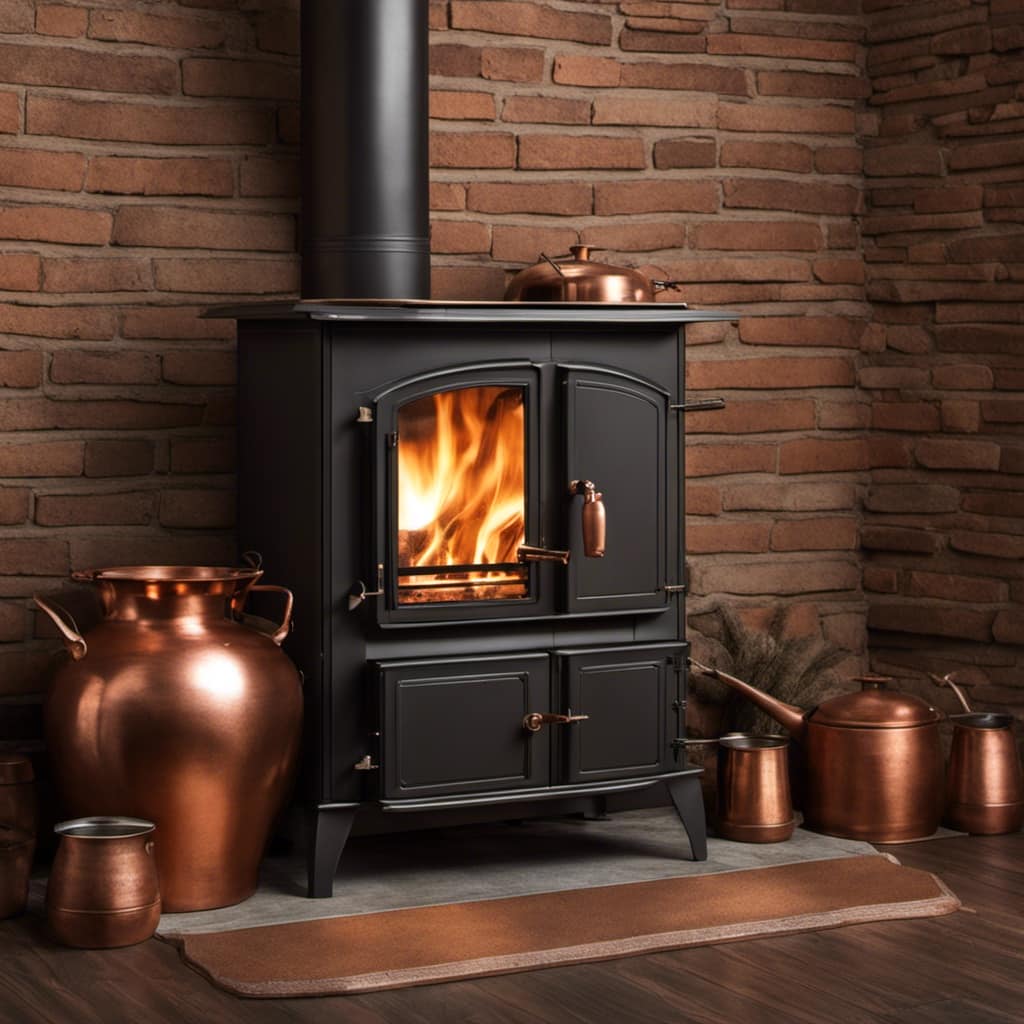
Preparing the Wood Stove and Chimney for Cleaning
As I inspect the area, I notice some debris that needs to be cleared before I can begin the cleaning process. I gather my tools and materials and start preparing the wood stove and chimney for cleaning.
First, I make sure to wear appropriate safety gear, including gloves and goggles, to protect myself from any harmful debris or chemicals.
Next, I carefully remove the ashes from the wood stove, using a metal scoop and a bucket to collect them. I also check for any signs of damage or wear in the stove, such as cracks or loose parts, and make a note to repair them later if necessary.
Moving on to the chimney, I climb onto the roof with a sturdy ladder and inspect the exterior for any visible damage, such as loose bricks or missing mortar.
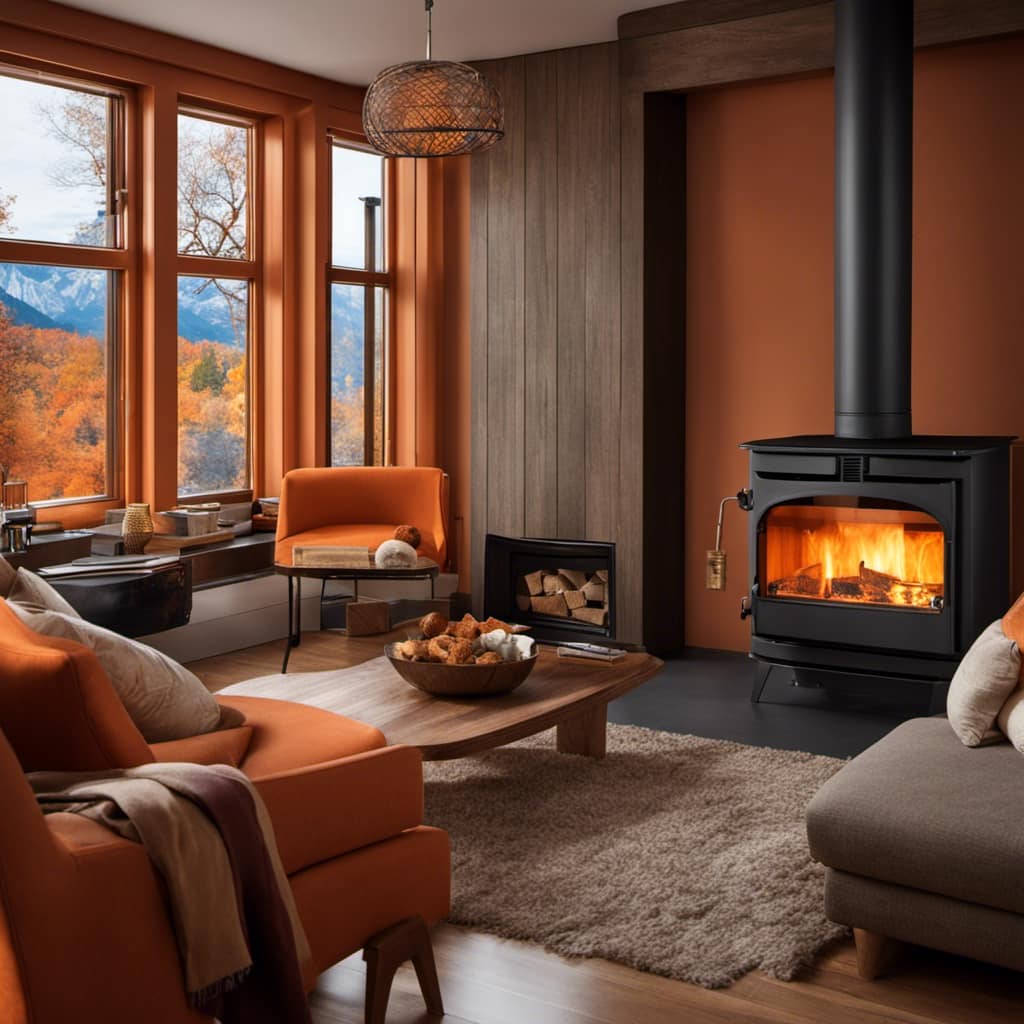
Finally, I cover the wood stove and surrounding area with a drop cloth to catch any falling debris during the cleaning process.
With these safety precautions in place, I’m now ready to proceed with cleaning the wood stove chimney.
Step-by-Step Guide to Cleaning the Chimney
To clean the chimney, start by gathering the necessary tools such as a chimney brush, ladder, and drop cloth.
Next, carefully climb onto the roof and position the ladder securely.

Once on top, insert the chimney brush into the chimney and begin scrubbing the interior walls in an up-and-down motion, making sure to remove any built-up soot and debris.
Soot Removal Techniques
I find that using a chimney brush is the most effective way to remove soot from my wood stove chimney. To ensure safety while cleaning, it’s important to take certain precautions. First, make sure the fire is completely extinguished and the stove is cooled down. Wear protective gloves and goggles to avoid any injuries. Now, let’s get into the step-by-step process of using a chimney brush.
- Begin by attaching the brush to a long, flexible rod.
- Carefully insert the brush into the chimney, starting from the bottom and working your way up.
- Use a twisting motion as you push the brush up and down to dislodge the soot.
- Repeat this process several times, making sure to cover the entire chimney surface.
- Once you’re done, remove the brush and use a vacuum or a dustpan to collect the loosened soot.
Remember, it’s important to clean your wood stove chimney at least once a year to prevent chimney fires and maintain optimal performance. Stay safe and happy cleaning!
| Safety Precautions | Cleaning Frequency |
|---|---|
| Wear protective gear | Clean chimney once a year |
| Ensure fire is extinguished | Regular inspections are recommended |
| Use a chimney brush | Schedule professional cleaning if necessary |
| Work from the bottom up | Keep a record of cleaning dates |
| Use a vacuum or dustpan | Be diligent in maintenance |
Preventing Chimney Fires
Chimney fires can be prevented by regularly removing soot buildup. Soot, which is a byproduct of burning wood, can accumulate inside the chimney and lead to the formation of creosote. Creosote is highly flammable and can ignite, causing a dangerous chimney fire.
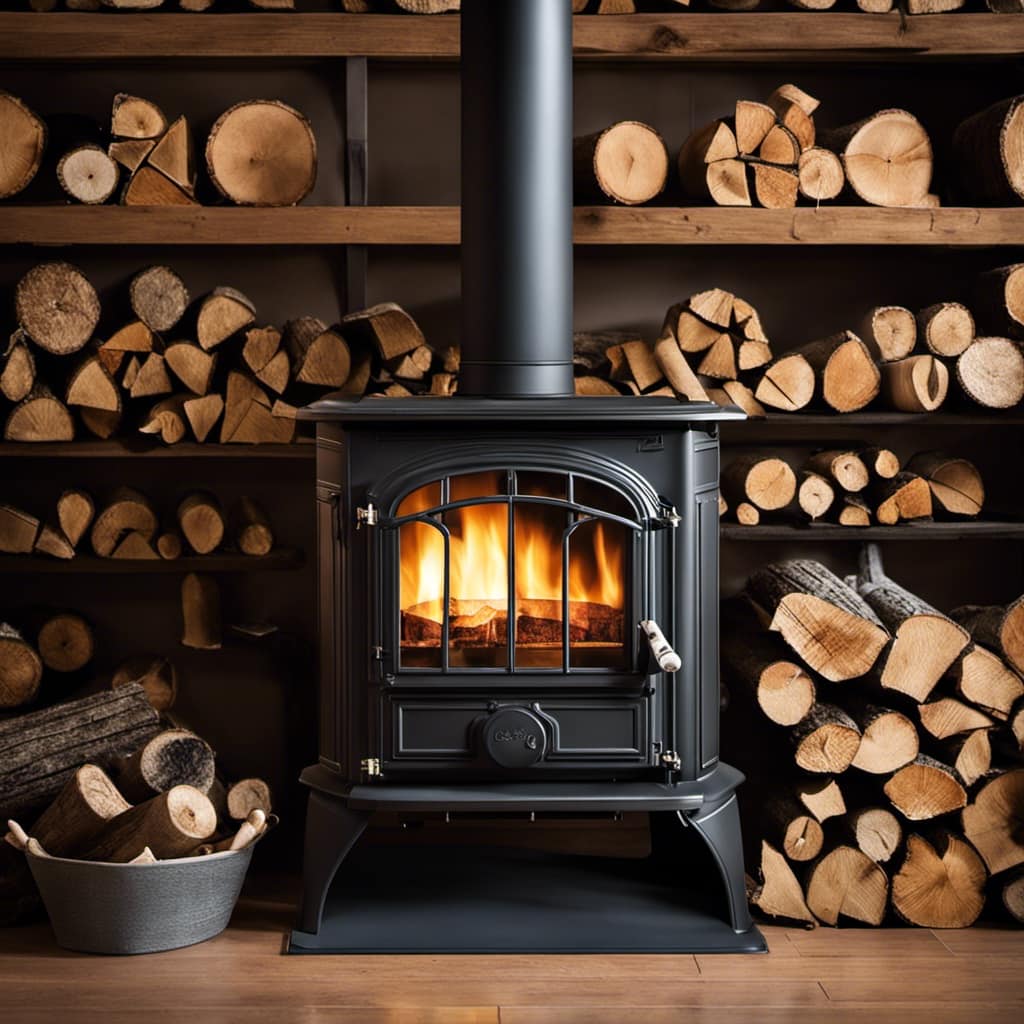
To reduce creosote buildup, it’s essential to have your chimney professionally cleaned at least once a year. A professional chimney sweep will use specialized tools to remove the soot and creosote from the chimney walls.
Additionally, it’s crucial to clear any obstructions such as bird nests, leaves, or debris from the chimney. Obstructions can hinder the proper flow of air and increase the risk of a chimney fire.
Regular maintenance and inspections are key to preventing chimney fires and ensuring the safe and efficient operation of your wood stove.
Tips for Maintaining a Clean Wood Stove Chimney
One thing I’ve found helpful for maintaining a clean wood stove chimney is regularly inspecting and clearing any debris.
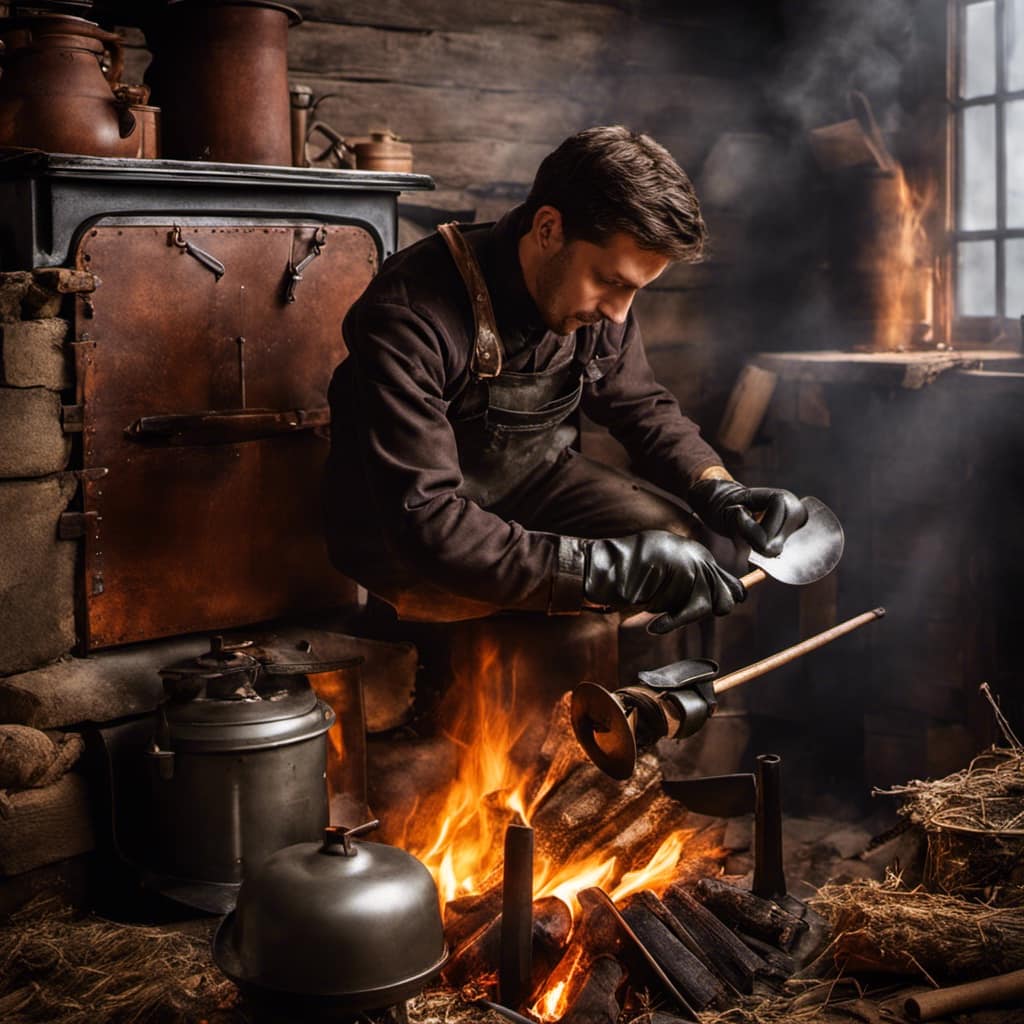
Chimney inspection is an important step in chimney maintenance as it helps identify any potential issues such as creosote buildup, blockages, or damage. To start the inspection, I use a flashlight to look up the chimney from the fireplace or stove. I carefully examine the flue liner, walls, and smoke chamber for any signs of damage or obstructions. If I notice any buildup of creosote or debris, I proceed to the next step: chimney sweeping techniques.
For chimney sweeping, I use a chimney brush specifically designed for the size of my chimney. I attach the brush to a flexible rod and carefully insert it into the chimney. Using an up-and-down motion, I sweep the brush along the chimney walls to dislodge any creosote or debris. It’s important to go slowly and thoroughly to ensure all the buildup is removed. To catch the falling debris, I lay down a tarp or old sheet in front of the fireplace or stove.
Once the sweeping is complete, I use a vacuum or brush to clean up any remaining debris in the fireplace or stove. I also check the chimney cap and ensure it’s in good condition, free from any blockages or damage.
Ensuring Safety and Efficiency in Your Wood Stove Chimney
To maximize safety and efficiency, regular maintenance and inspections are crucial for my wood stove setup. Here’s a step-by-step guide to ensure that my wood stove chimney is clean and functioning properly:
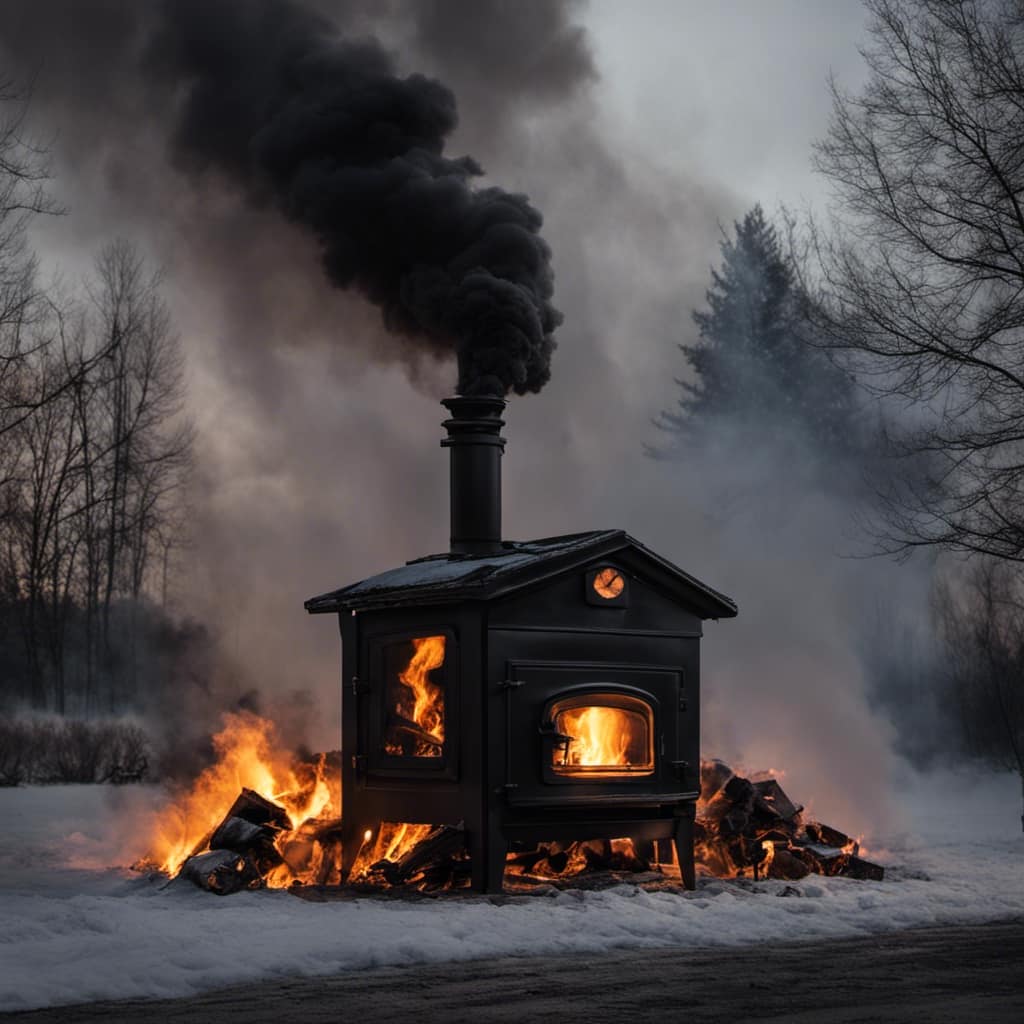
-
Clean the interior: Start by removing any ash or debris from the stove’s interior. Use a fireplace brush or vacuum to clean the firebox, ensuring no blockages in the air vents.
-
Inspect the chimney: Check for any visible signs of damage, such as cracks or loose bricks. These can affect the chimney’s ability to draw out smoke and gases effectively. If any issues are found, contact a professional for repairs.
-
Clean the flue: Use a chimney brush to clean the flue, starting from the top and working your way down. Make sure to remove any creosote buildup, as it can be a fire hazard. Wear protective goggles and a mask to prevent inhalation of soot and debris.
-
Check the chimney cap: Ensure that the chimney cap is intact and free from any obstructions. A damaged or missing cap can allow animals, debris, or rainwater to enter the chimney, leading to blockages or damage.
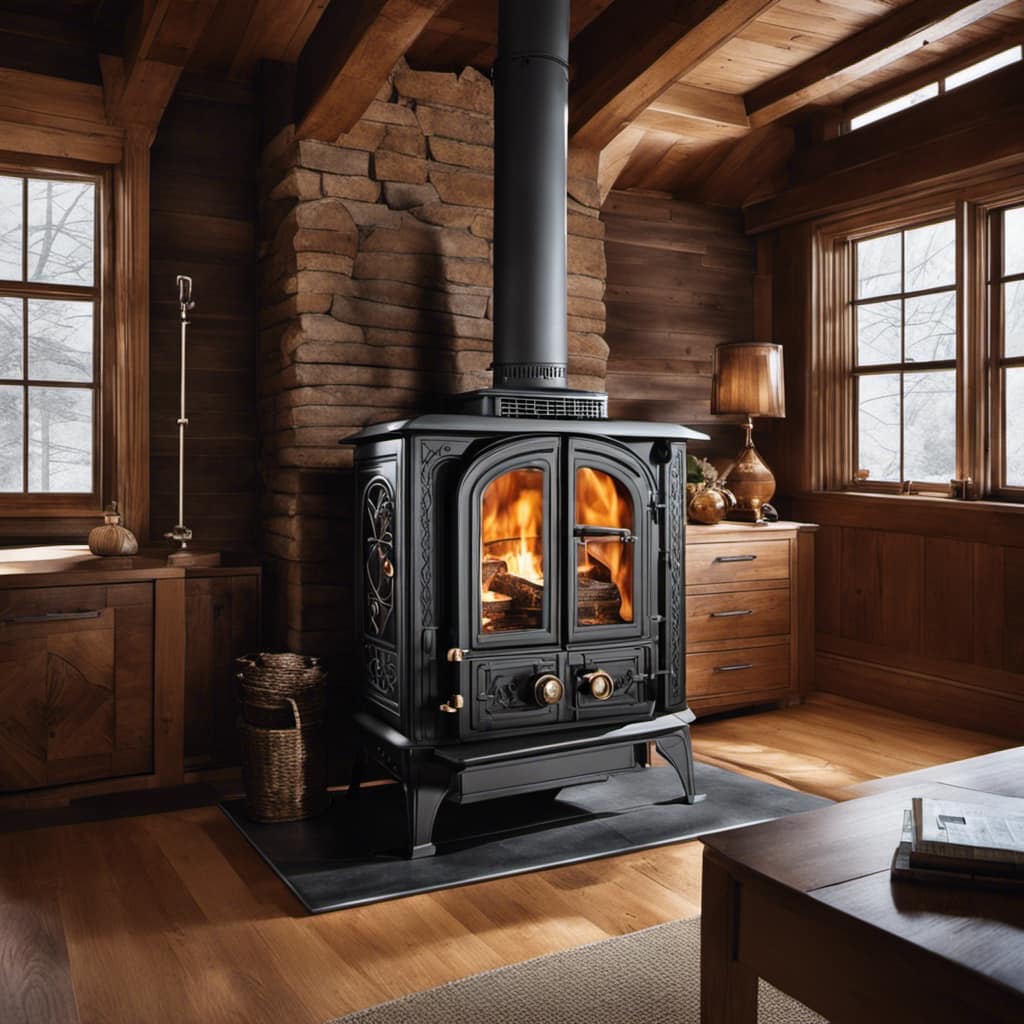
Regular wood stove maintenance and chimney inspections are essential to prevent accidents and maintain the efficiency of the setup. By following these steps, I can ensure that my wood stove chimney is in optimal condition, providing safe and efficient heating throughout the winter.
Frequently Asked Questions
How Often Should I Clean My Wood Stove Chimney?
I clean my wood stove chimney at least once a year to ensure it’s working efficiently and to prevent any potential fire hazards.
It’s important to follow best practices for chimney maintenance, such as removing any creosote buildup and inspecting for any cracks or damage.
Regular cleaning and maintenance help maintain the safety and functionality of your wood stove chimney.

Now, let’s dive into how to clean a fireplace chimney and the step-by-step process to ensure a thorough cleaning.
Can I Clean My Wood Stove Chimney Myself or Should I Hire a Professional?
I can clean my wood stove chimney myself, but there are pros and cons to consider.
The benefits of DIY chimney cleaning include saving money and the satisfaction of doing it yourself. However, it can be a time-consuming and potentially dangerous task if you’re not experienced.
Hiring a professional ensures a thorough and safe cleaning, but it can be more expensive.
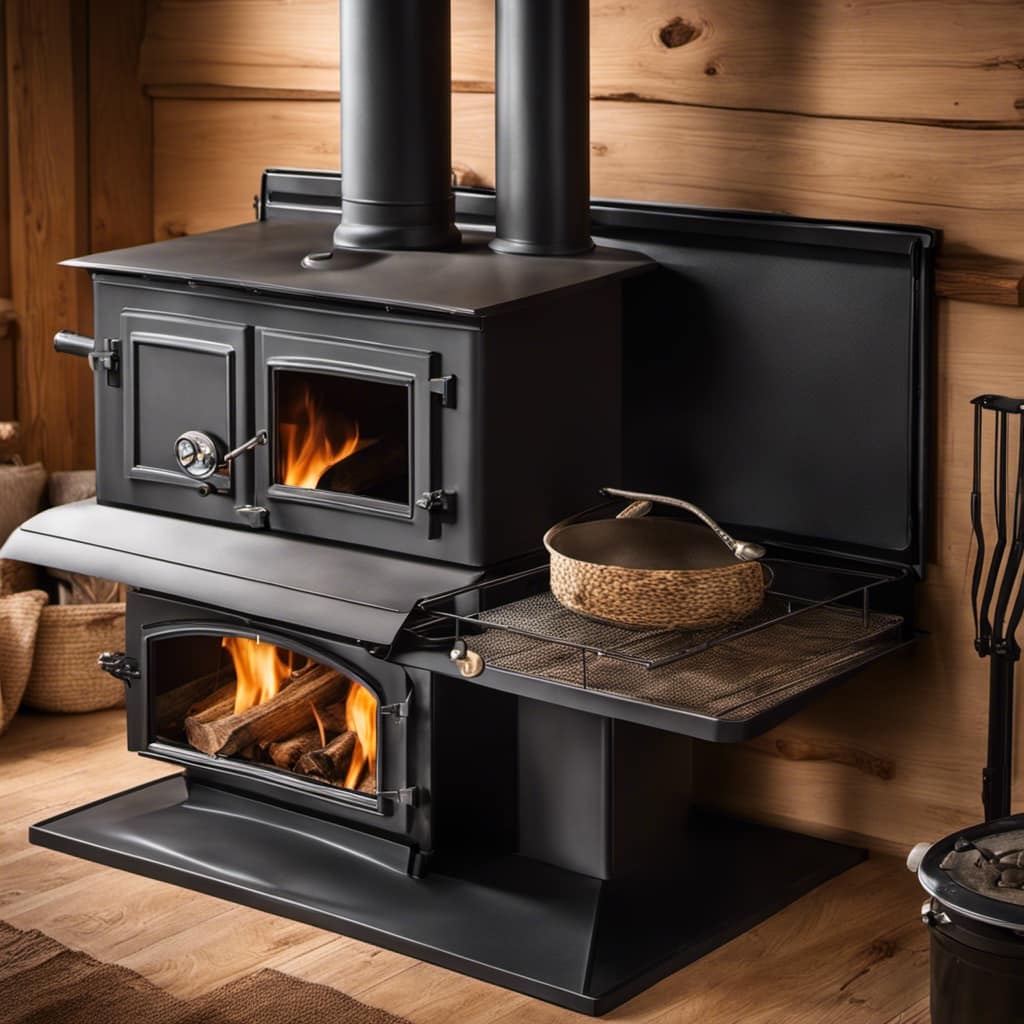
Ultimately, the decision depends on your comfort level and expertise.
What Are the Signs That Indicate My Wood Stove Chimney Needs Cleaning?
When it comes to the signs that indicate my wood stove chimney needs cleaning, there are a few key things to look out for.
First, if you notice a decrease in the efficiency of your wood stove or a decrease in the heat output, it could be a sign of chimney blockage.
Additionally, if you see excessive smoke or a strong odor coming from your chimney, it’s time to clean it.
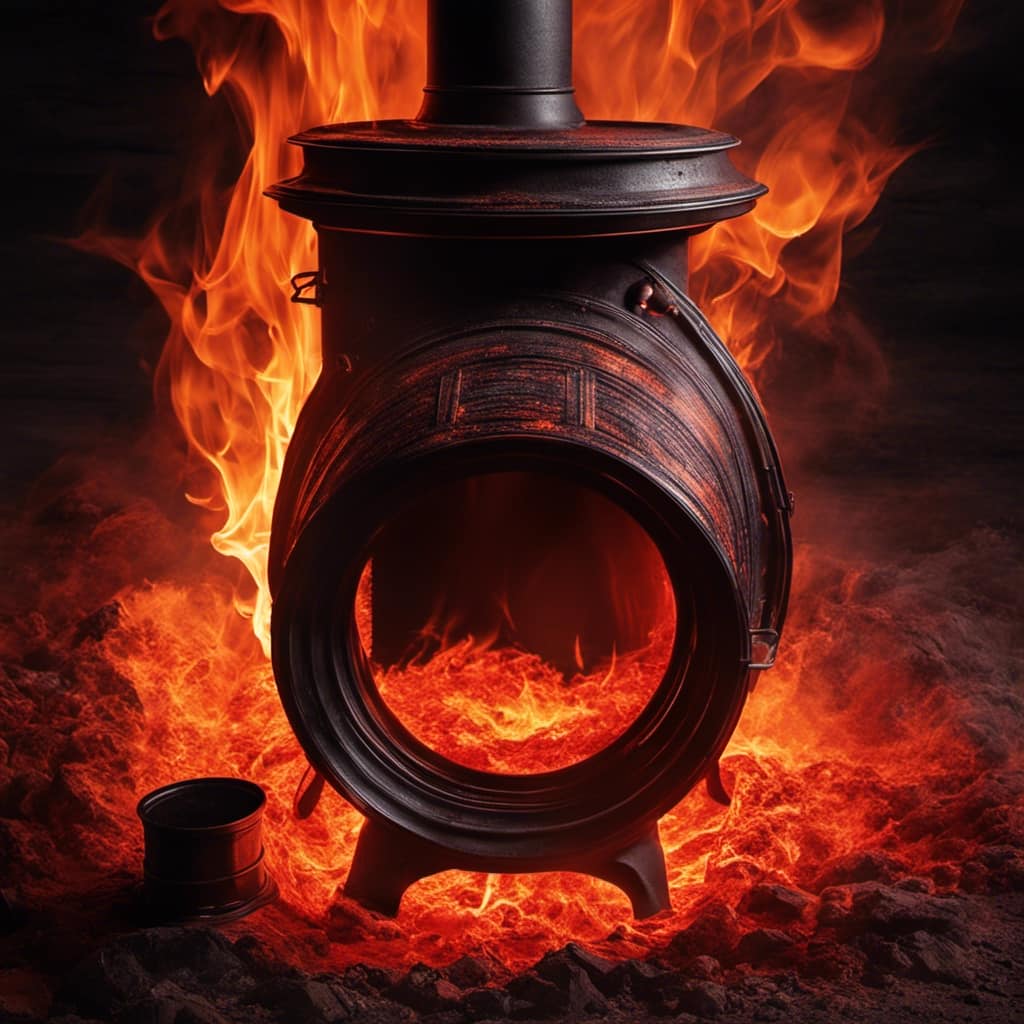
Regular chimney maintenance is important to ensure proper functioning and safety.
Are There Any Specific Safety Precautions I Should Take While Cleaning My Wood Stove Chimney?
When it comes to cleaning my wood stove chimney, safety is my top priority.
I always make sure to wear the proper safety gear, such as gloves, goggles, and a mask, to protect myself from any potential hazards.
Additionally, I use the right cleaning tools, such as a chimney brush and rods, to effectively remove any creosote buildup.
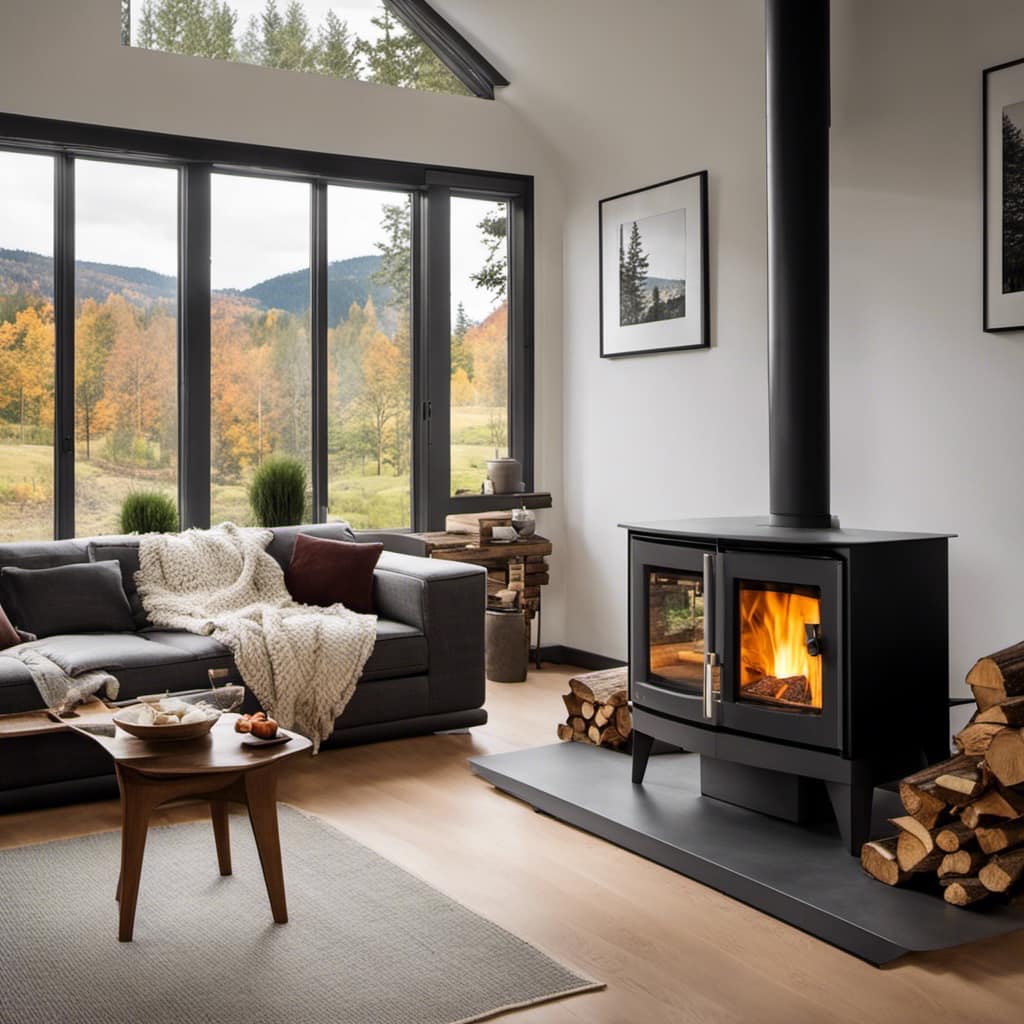
Taking these precautions ensures that I can clean my wood stove chimney safely and efficiently.
Are There Any Alternative Methods or Products for Cleaning a Wood Stove Chimney?
When it comes to cleaning a wood stove chimney, there are alternative methods and safe products that can make the process easier.
One option is using chimney cleaning logs, which are designed to break down creosote and other buildup.
Another method is using a chimney brush and rods to physically remove the debris.
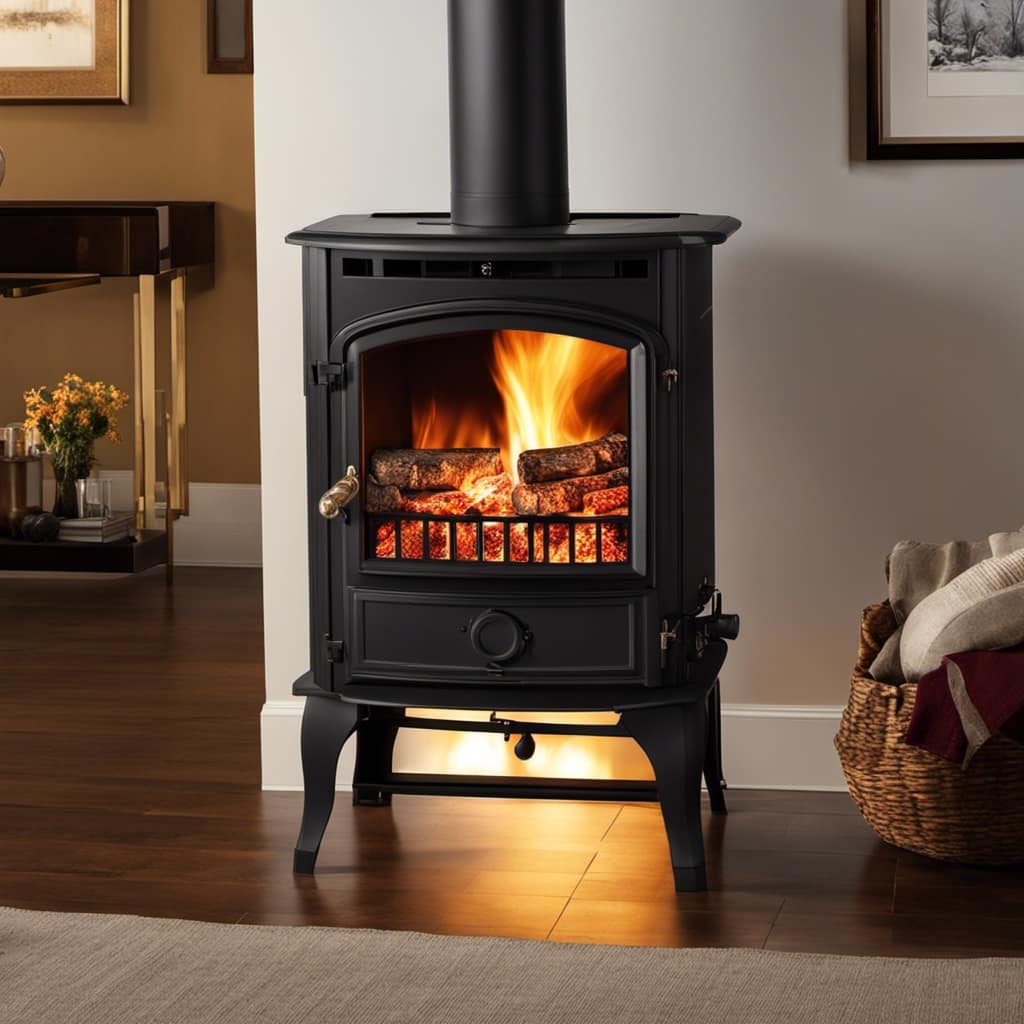
Both of these methods can be effective, but it’s important to follow the manufacturer’s instructions and take necessary safety precautions while cleaning.
Conclusion
In conclusion, by regularly cleaning your wood stove chimney, you can ensure the safety and efficiency of your heating system.
Just like a breath of fresh air, a clean chimney allows for a smooth flow of smoke and prevents potential hazards.
With the right tools and materials, along with proper maintenance, you can keep your wood stove chimney in top-notch condition.
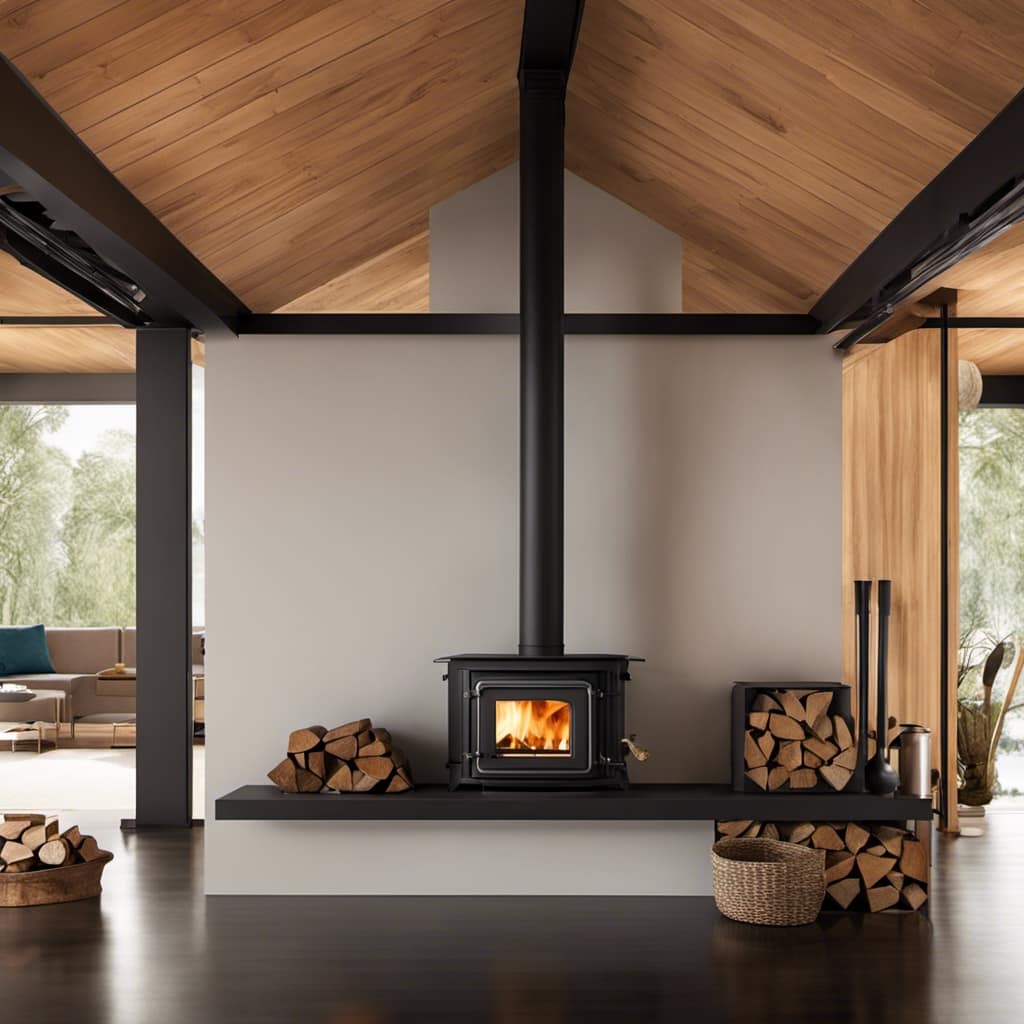
So, let your chimney breathe freely and enjoy the warmth and comfort it brings to your home.
Growing up surrounded by the vast beauty of nature, Sierra was always drawn to the call of the wild. While others sought the comfort of the familiar, she ventured out, embracing the unpredictable and finding stories in the heartbeat of nature.
At the epicenter of every remarkable venture lies a dynamic team—a fusion of diverse talents, visions, and passions. The essence of Best Small Wood Stoves is crafted and refined by such a trio: Sierra, Logan, and Terra. Their collective expertise has transformed the platform into a leading authority on small wood stoves, radiating warmth and knowledge in equal measure.





